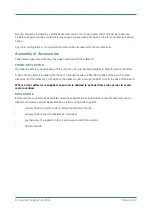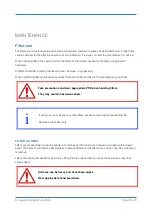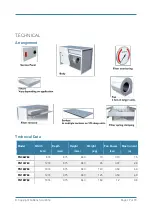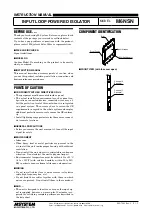
© Copyright AirBench Ltd 2016
Page 5 of 19
INSTALLATION
General
Unpack the unit and check for damage, if not already completed.
The AirBench must be installed on a flat and level floor capable of carrying the weight of the unit. For nominal
unit weights, see Specifications section at rear of manual. When determining an installation location, be aware
that the air exhaust must discharge somewhere. Do not position the unit so all outlets are blocked.
These models are designed to be moved into place using a forklift or pallet truck, taking care not to damage
fittings on the base of the unit.
Please note installation may be required when using certain accessories, external fansets, or ducting (see
below).
Electrical
WIRING
AirBench is supplied as standard with an internal fan or fans. These are pre-wired to a switch or speed
controller and fitted with a lead and plug for your convenience. Standard electrical supply is 240V/1Ph/50Hz.
Certain models can be supplied with 110V/1Ph/50Hz internal fans if specified in advance; this is noted on the
front left of each unit where applicable.
BS7671 requires that the lead is appropriate for the working environment and you must satisfy yourself that the
pre fitted lead is satisfactory.
EARTH BONDING
A stud is provided for use where appropriate e.g. in cases where equipotential bonding is required or where an
external fan is fitted.
If in doubt consult a qualified electrician.
FUSES
Switched units: A fuse is provided on the switch front plate.
Speed controlled units: An additional fuse is provided within the speed control panel. To check this fuse,
remove the service panel; the speed control panel is mounted on the rear of the service panel.
Ducted Units
As standard, AirBenches are configured to discharge through the base of the unit without ductwork. Ducting
should not be retrofitted to the base of the unit without consultation with the manufacturer.
When configured for exhaust to atmosphere via ductwork a discharge spigot will be visible. These units are
designed to connect to ductwork of the same size as the discharge spigot (generally 200 or 250 mm diameter).





































